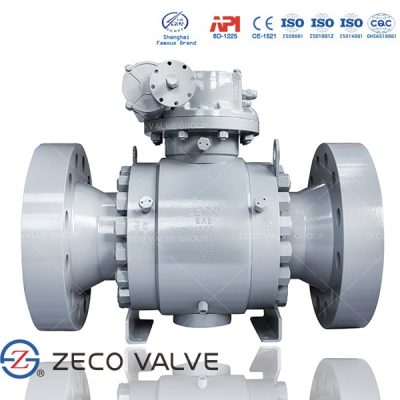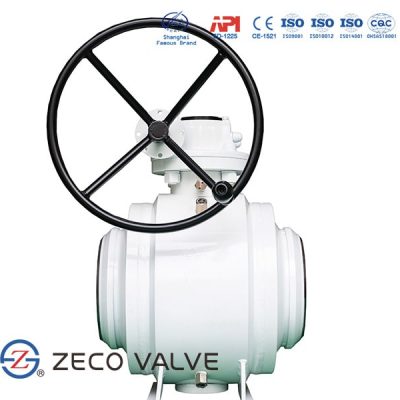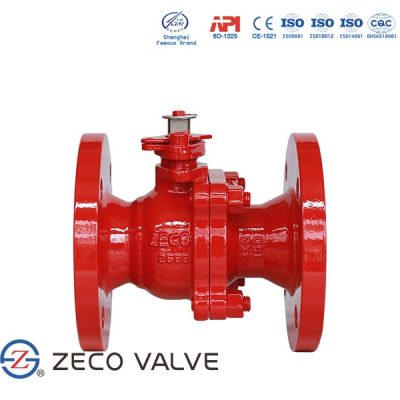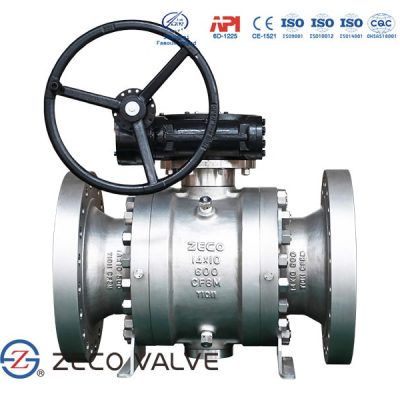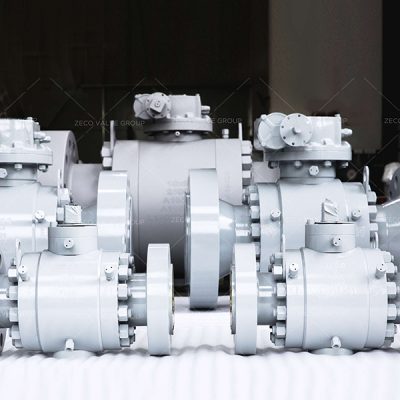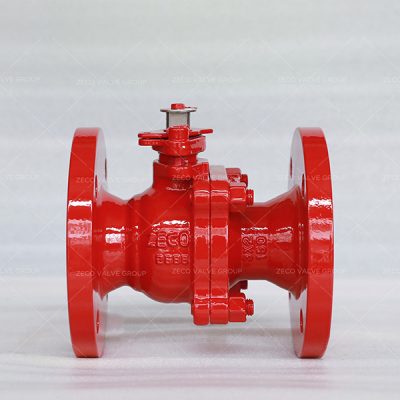Ball valves are tough, durable, and reliable. They close securely even after long periods of not being used. These qualities make them an excellent choice for shutoff and control applications. Ball valves are unable to provide fine flow control or throttling. Gate, globe, or needle valves are more appropriate for these situations.
What is Reduced Port Ball Valve?
Because reduced port ball valves have an opening that is typically one size smaller than the pipe diameter, they cause a larger pressure drop even when fully open. This is because media is constricted slightly as it passes through the valve, increasing the pressure and causing a potential cavitation risk in applications where the smaller port size may cause a rapid pressure drop.
Standard port ball valves are typically more economical than full port designs when considered for the same pipe size since they have smaller bodies that correspond to their narrower port. They are available in the same or lower pressure ratings compared to full port ball valves.
- Has a straight flow path
- Flow restriction produces a pressure drop
- The flow path through the valve becomes narrower on the inside
A Reduced bore valve body is about the same diameter as the pipe or tube coming into and exiting it. The working part of the valve is the ball inside the valve body. Since the working part of the valve fits inside the valve body, the bore through the valve ball is smaller than the diameter of the valve’s connecting pipe or tube.
Reduced Bore Ball Valve Design
A reduced port also has a straight flow path, but there is a flow restriction that produces a pressure drop as the flow passes through the valve. Basically, the valve inlet and outlet connections are the same sizes as the tubing or pipe, but the interior component (the ball), which fits within the valve, has a smaller bore (hole) than the pipe or tube that it is connected to, therefore producing the pressure drop due to the flow restriction.
What are Valve Ports?
The ports of a valve are generally understood to be the connections that carry the flow of the liquid or gas into the valve and away from it.
What is Valve Bore Size?
Valve bore size is the size of the hole through the ball, the working part of a ball valve. The difference between a standard and a full-bore ball valve is directly related to the size of the ball and its bore. Full port bore sizes are the same as the inner diameters of both the valve ports and the pipe used. The standard port bore size is about the same as the next smaller pipe size.
How do you Determine If You Need a Full Port Ball Valve or If a Reduced Bore Ball Valve will Suffice?
Some applications require a full port ball valve due to a characteristic of their application; for example if low flow resistance is needed. In the case of a pump suction pipe where a pressure drop can impact the performance of a pump, a full port valve may be the best choice to maintain flow.
Yet, unless your application requires a full port, the reduced port is the default valve for most functions. It provides the most cost-effective way to control the flow in many applications. Concurrently, where so often space constraints are an issue, their relatively compact design gets the job done with a smaller ball valve body, so long as a pressure drop or flow turbulence is acceptable in your system.
When to Use Reduced Port Ball Valves
Reduced port ball valves are perfectly suited to most applications that call for ball valves. They are relatively compact, accomplishing their function while taking up less space and keeping costs down. If you require quick on-off function, simple operation, durability and a guaranteed leak-tight seal, any style of ball valve — full port or standard port — will deliver.
As long as a moderate pressure drop and slight flow turbulence are acceptable in your system, standard port ball valves are recommended.
In fact, changes in flow rate are normal in most piping systems; length of pipe sections, bends in the system or system conditions will affect the flow rate enough that a standard port valve will not be the most influential factor. In the vast majority of applications, the difference between a full port and a reduced port ball valve will have a negligible impact on the overall flow rate of the piping system.
Reduced Bore Ball Valves vs Full Bore Ball Valves
A reduced port ball valve, also known as a standard port ball valve, has a narrower and restricted flow path than the pipeline’s internal diameter. Specifically speaking, a 3/4” reduced port valve has a 1/2” pipe size ball opening.
Compared to full port ball valves, reduced port ball valves have a higher velocity, energy loss, pressure drop, and friction on application. But they have their own strength. The more compact body leads to lower costs. Thus, if those applications have no strict demand on flow rate but a higher requirement on materials like full stainless body, the reduced port ball valve is an economical choice.

